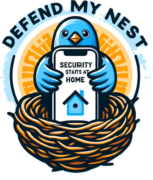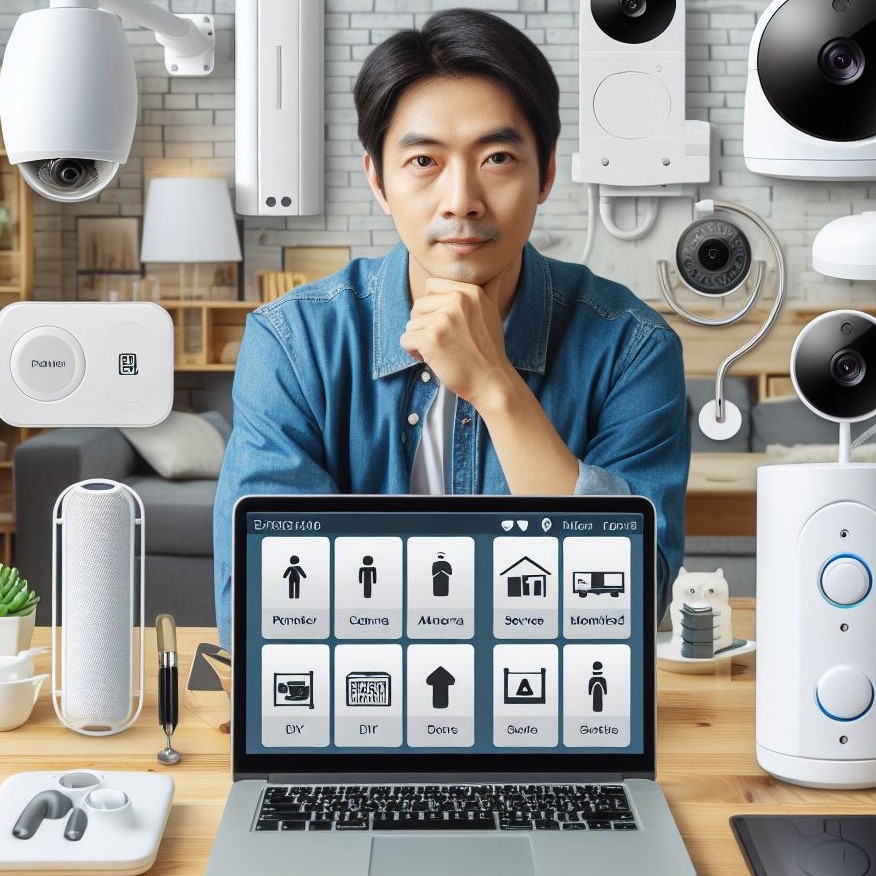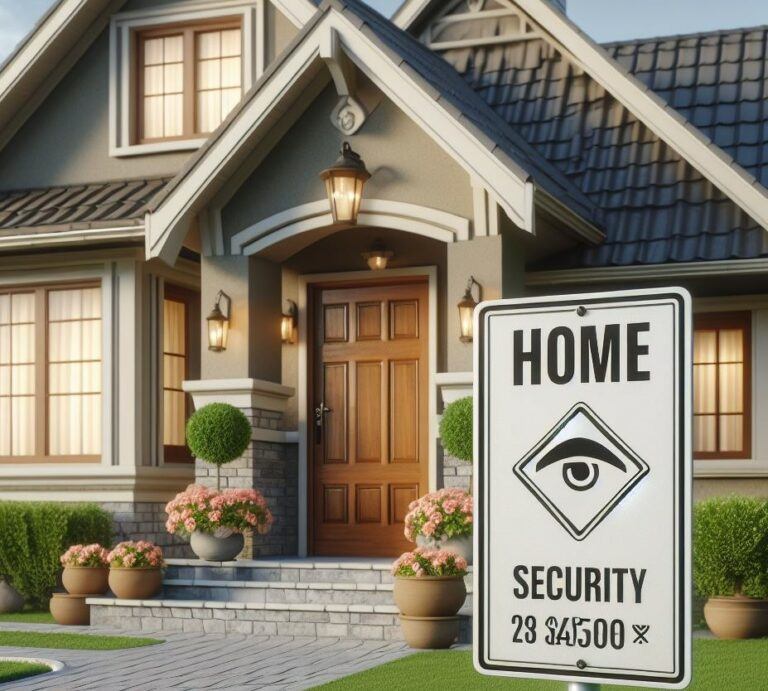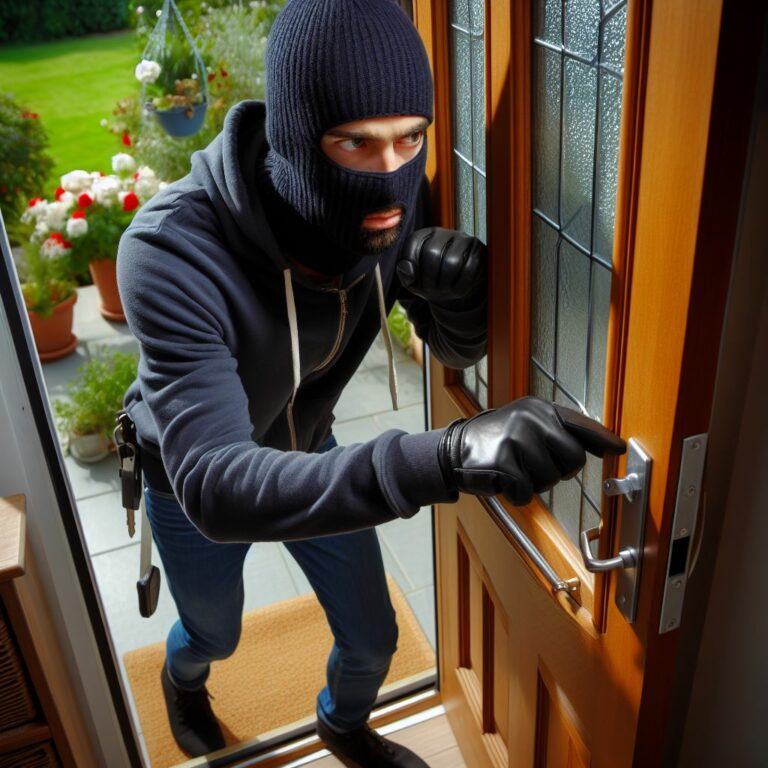3 Important Things about Home Security Cameras Systems
I’m going to start by demystifying home security cameras systems. If you’re new to this, a home security camera system is a network of cameras designed to monitor and record activities around your home, offering peace of mind and an added layer of protection. The system often comes with a variety of cameras, each tailored for specific conditions and locations.
There are various types of top smart home security systems, including wired systems that require cabling for power and data transmission, and wireless systems that communicate over Wi-Fi or other radio frequencies. IP cameras, another popular choice, use internet protocols to transmit video over a network without the need for a separate recording device.
Typical home security cameras systems include several key components. You’ve got the cameras themselves, recording devices such as DVRs (Digital Video Recorders) or NVRs (Network Video Recorders), and usually a control interface, like an app on your smartphone, that lets you access and manage the footage.
This isn’t just about setting up a few cameras; it’s also about understanding how the field has advanced. Home security cameras systems have come a long way, benefiting from technological advancements. Now, they offer high-definition video and sophisticated features like motion detection and night vision. It’s this progression that ensures better safety and efficacy of modern systems.
In the next part, you will learn how to customize these systems according to your unique needs. There are many factors to think about, so I will guide you through choosing the system that suits your specific situation best.
Table of Contents
Evaluating Your Home Security Cameras Systems
I’m going to walk you through the initial step in choosing top smart home security systems to evaluate your home security needs. It may sound daunting, but don’t worry; I’ve got your back. This step is crucial because it’s not just about getting any camera system; it’s about getting the right one for you.
Firstly, let’s consider the size and layout of your home. If you live in a large house, you’re going to need a system that covers more ground. This might mean more smart cameras or cameras with a wider field of vision. For those in compact spaces, fewer cameras may suffice. So choose something that resonates with you and your living space.
Next, think about the level of security you’re comfortable with. Are you looking to deter potential burglaries, or do you need to keep a watchful eye on pets or children? Your neighborhood might influence this decision—if you’re in a high-crime area, for example, you might opt for a more comprehensive system.
You’re also going to find out about privacy concerns. Always keep in mind that any security system should respect the privacy of others. Be mindful of where the wireless outdoor home cameras are pointed to avoid invading your neighbors’ privacy.
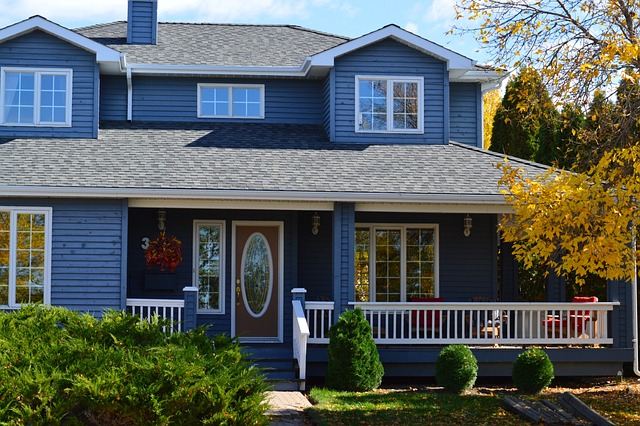
Lastly, consider how the home security cameras systems will integrate with any smart home gadgets you have. Seamlessly meshing security with your smart lights or smart locks, for example, can enhance your home’s overall safety. As you mull over these factors, you pave the way for making an informed decision on the features you’ll need, which naturally leads us into the next section.
Features to Look For in Home Security Cameras System
When you’re in the market for home security cameras systems, the sheer number of features and specs can be overwhelming. You want to make sure you’re choosing a system that not only meets your security needs but also gives you the best bang for your buck. In my opinion, these are the key features you should consider:
First up, video quality is king. High-resolution cameras, such as those offering 1080p or even 4K, will let you see the details you need, like faces or license plates, with much more clarity. A grainy video might help you detect motion, but it won’t always help you identify the culprit.
Having night vision is also important. Many break-ins occur at night, so you need cameras that can see well in the dark with infrared or LED technology. This way, you won’t be unaware or blind, in both senses of the words.
Choose a system with motion detection and alerts that notify you of any activity. This isn’t just about capturing footage; it’s also about preventing incidents. You’ll want to adjust the sensitivity settings to minimize false alarms, such as those triggered by a passing car or a pet.
Storage options matter. Cloud storage is convenient, allowing you to access footage from anywhere, but it often comes with a subscription fee. Local storage, like a hard drive or SD card, can be a cost-effective alternative. Be aware of the capacity and how often you need to overwrite old footage.
If you’re planning on outdoor cameras, weatherproofing features are non-negotiable. Ensure the cameras are rated for your local climate, to withstand everything from blistering heat to freezing snowstorms.
In the grand scheme of things, you can always adjust your approach down the road, but choosing the right features from the get-go will provide a solid foundation for the security of your home.
Installation and Maintenance Insights
I’m going to take you through the nuts and bolts of getting your home security cameras systems up and running, and how to keep it functioning smoothly. You’ve got two main choices for installation: roll up your sleeves for a DIY project or hire a professional. Let’s talk about the pros and cons of each.
For the do-it-yourselfers, there’s a sense of accomplishment waiting at the end. Many systems come with user-friendly instructions, and online guides and videos are abundant. Just don’t worry too much about getting it perfect on the first try; you can always adjust your approach down the road.
Now, professional installation might be the route for you if you’re not comfortable with technology or you just prefer the reassurance of a pro. It can be especially helpful if your system is complex or hardwired. Think of it as investing a bit more to save potential headaches later.
Once your system is in place, maintenance is next on the list. Stay on top of software updates as they’re key for keeping your home secure. These updates often patch security vulnerabilities and add new features. Plus, regularly cleaning your camera lenses ensures you’re getting the clearest picture.
Technical issues might crop up; it’s part of the deal. But, if you’re informed about your system, you’ll handle it like a champ. Many manufacturers offer customer support, so help is there if you need it. And remember, routine check-ups on your equipment can prevent many issues before they even start.
That wraps it up for installation and maintenance. Choose something that resonates with you and fits your lifestyle because a system that’s well-tended is a system that tends to work with fewer issues. Now, let’s look ahead and see what the crystal ball of technology has in store for home security cameras system.
The Future of Home Security Cameras Systems
I’m going to walk you through some of the significant trends and innovations that are shaping the future of home security cameras systems. This isn’t just about the gadgets themselves, it’s also about the technology that drives them.
AI and machine learning are no longer just buzzwords; they’re becoming integral to home security. You’re going to find cameras that can learn and identify normal patterns and send alerts when something unusual happens. This includes companies making strides in incorporating advanced object recognition to differentiate between a person, a car, or even an animal.
Facial recognition technology is a hot topic and it’s making its way into our homes via security cameras. Choose something that resonates with you regarding privacy, but also recognize the potential for improved security and convenience as cameras can now recognize family members and regular visitors, reducing false alarms.

Cybersecurity is a big deal. These top smart home security systems are part of your network, and their vulnerabilities could put your data at risk. Manufacturers are continually improving encryption and security protocols to ensure your footage stays private and secure.
Integration is key, and we’re seeing more security systems blending seamlessly with smart home ecosystems. This means you can expect to control your cameras with the same apps that manage your lighting, heating, and entertainment systems, for a truly interconnected experience.
In my opinion, staying informed about these advancements is crucial. A lot is happening very quickly in the home security camera space, and keeping up with technology means better protection and convenience for your home and family. I hope that this glimpse into the future helps you make more informed decisions about securing your home.
The Vital Role of Monitoring in Home Security Cameras Systems
A home security system needs monitoring to protect your property from possible dangers. Monitoring keeps a close eye on your home and alerts you and the authorities if something goes wrong. You can have peace of mind knowing that your home is always watched, even when you’re not there. Here are some reasons why monitoring is essential for any home security system:
Immediate Response to Emergencies:
Professional monitoring services can alert authorities quickly in case of a break-in, fire, or other emergencies. This fast action can help reduce property damage and protect your loved ones. Faster response times are crucial for minimizing the impact of these situations.
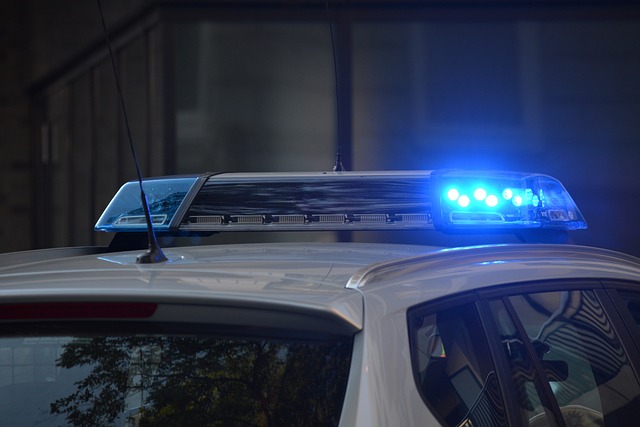
24/7 Surveillance:
Whether you are at home or away, you can enjoy peace of mind with home security systems that have monitoring capabilities. These systems provide constant surveillance and respond quickly to any signs of trouble.
Enhanced Deterrent Against Crime:
Criminals tend to avoid homes with monitored security systems, which display signs of surveillance and alert the authorities in case of a break-in. These signs discourage potential burglars or vandals, who look for easier targets instead.
Remote Access and Control:
With monitoring capabilities, many modern home security cameras systems let homeowners access them remotely through smartphone apps or web portals. Homeowners can watch their property live, get alerts, and even control security features from anywhere, making it more convenient and flexible.
Peace of Mind:
One of the greatest benefits of monitoring is that it gives homeowners a sense of calm and confidence. You can rest assured that your home is under the vigilant care of skilled experts who can handle any potential dangers. You don’t have to live in constant fear or stress about your safety.
In summary, monitoring is more than an option for home security systems; it’s a vital service that guarantees the security and protection of your home and family. Choosing a monitored security system is a choice for peace of mind and the best defense for your most valuable assets.
Conclusion
Choosing home security cameras systems requires considering your needs (size of home, security level) and desired features (resolution, night vision, weatherproofing). Regularly maintain your system for optimal performance. The future holds exciting advancements in AI, facial recognition, and smart home integration.
Now that you are learning more about smart home security cameras systems, take the time to read the next article about the Importance of Home Security Systems.
Alternatively, you can jump ahead and check out the Amazon Ring Doorbell Camera system.
Wille McCain
